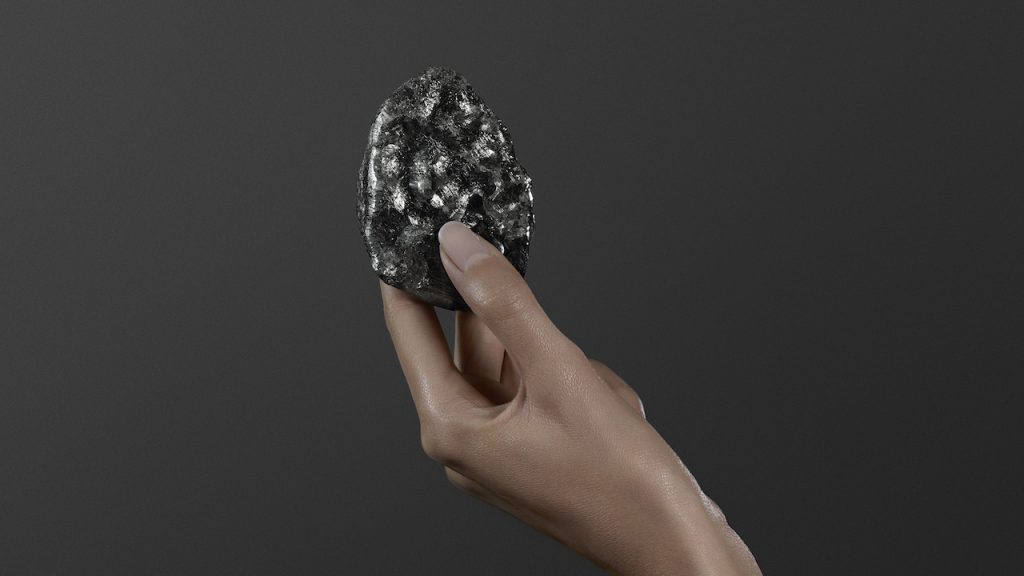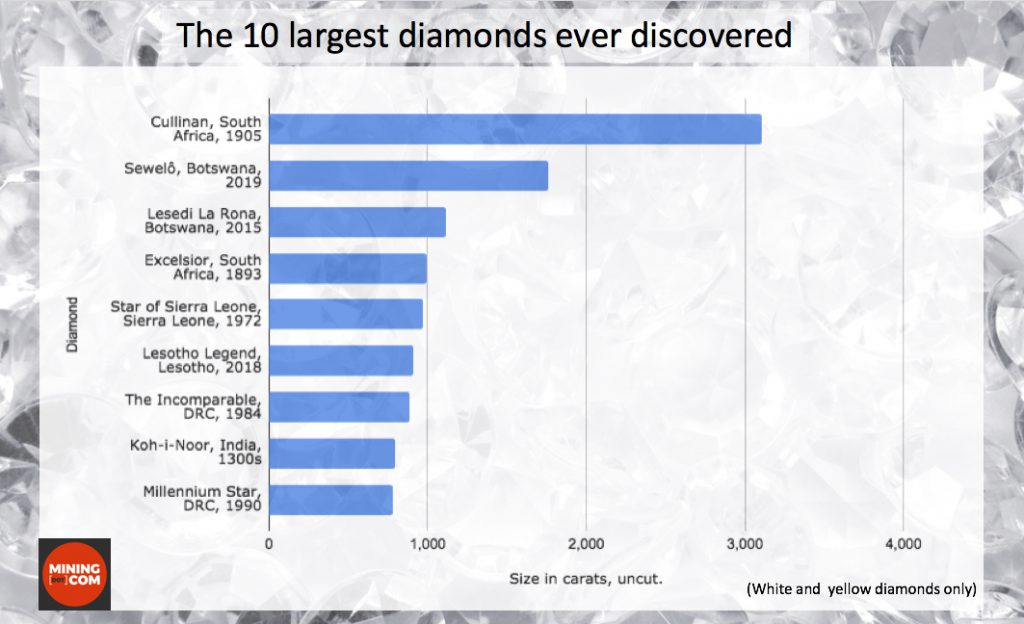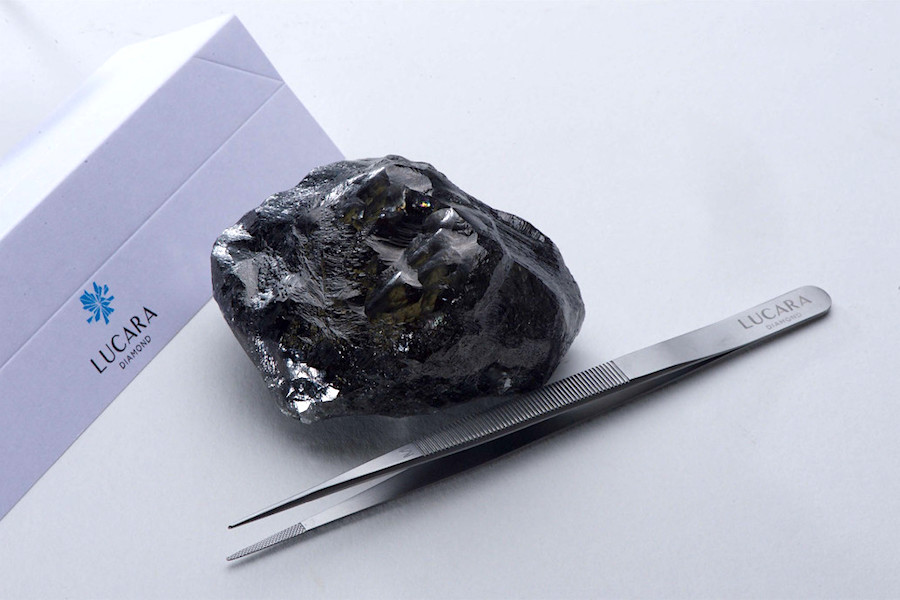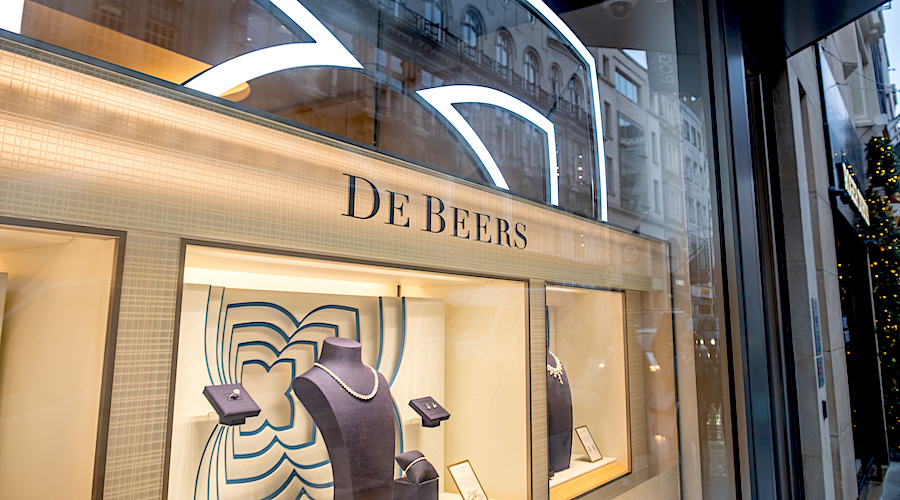Louis Vuitton is turning the world’s second-biggest diamond into jewellery

Luxury retailer Louis Vuitton has unveiled its recently acquired 1,758-carat rough diamond, the second-largest ever discovered, to a select audience in Paris, France, before its turns it into a fine jewellery collection.
The 166-year-old fashion house, which announced last week it was the new owner of the Sewelô diamond, meaning “rare find” in Southern Africa’s Setswana language, will now leave it in the hands of Belgium’s HB.
The Antwerp-based diamond manufacturer will cut and polish the blackened, tennis-ball sized stone, found last year by Canada’s Lucara Diamond (TSX:LUC).
The stone is covered in black carbon, and the quality of the diamond under that layer remains a mystery. There is no guarantee that it will produce precious stones of high quality
Melissa Smet, director of the Syndicate of the Belgian Diamond Industry (SBD)
While the mining company has not revealed how much it sold the diamond for, it said it would be cut into smaller pieces, part of a fine jewellery collection.
According to HB, Louis Vuitton paid 50% up front for the diamond, with Lucara keeping an interest in the other half. Both players have also agreed to direct 5% of the proceeds from the retail sales to community-based initiatives in Botswana.
Before Lucara found Sewelô, the previous holder of the world’s second-largest diamond was the 1,111-carat “Lesedi La Rona”, also dug up by the Vancouver-based miner, in 2015. The rock sold for $53 million to luxury jeweller Graff Diamonds in 2017.
The only larger diamond ever unearthed was the 3,106-carat Cullinan Diamond, discovered in South Africa in 1905. The Cullinan was later cut into smaller stones, some of which now form part of British royal family’s crown jewels.
What makes Sewelô special, according to Melissa Smet, director of the Syndicate of the Belgian Diamond Industry (SBD), is its “mysterious” nature.

“The stone is covered in black carbon, and the quality of the diamond under that layer remains a mystery,” she told The Brussels Times. “There is no guarantee that the diamond will produce precious stones of high quality, which means a great risk.”
Karowe, which began commercial operations in 2012, yielded last year more than 20 diamonds larger than 100 carats, eight of them exceeding 200 carats.
Lucara, which has focused efforts on the prolific Botswana mine as of late, is close to completing a feasibility study into potential underground production and extension of the mine’s productive life.
Louis Vuitton’s purchase is just the latest move its parent company, LVMH, has taken into the luxury jewellery market. The conglomerate also owns Italian jewellery brand Bulgari and watchmakers TAG Heuer and Hublot, and in November, it acquired the iconic New York jeweller Tiffany & Co. for more than $16 billion.

More News
Anglo starts talks with banks on possible De Beers IPO
Anglo is pursuing a dual-track process in its effort to exit De Beers by trying to find a buyer for the struggling business.
March 28, 2025 | 12:19 pm
PDAC JV video: Golden Pursuit preps for discovery at sub-Arctic Gordon Lake, CEO says
A program to scan archived core using AI and expand geophysical surveys on the Wooferine-Lynk Zones is set to start soon.
March 28, 2025 | 11:35 am
{{ commodity.name }}
{{ post.title }}
{{ post.excerpt }}
{{ post.date }}



2 Comments
Hans Kloster
January 22: Luxury retailer Louis Vuitton has unveiled its recently acquired 1,758-carat rough diamond, the second-largest ever discovered..
The Sewelo diamond is an carbonado maybe like the black Orloff 67,5 ct, but it is not the second largest. The Brazilian carbonado Sergio es 3.150 ct.
Cecilia Jamasmie
Thanks for your input, Hans. While is true that, in terms of size, the “Carbonado do Sergio” discovered in Brazil in 1895 is the largest, this article and related ranking of largest diamonds ever only include white and yellow diamonds.
Sergio is a carbonado — industrial-quality stones that are opaque and believed to be found only in Brazil and the Central African Republic. It means those types of diamonds aren’t cut and polished like their “cousins.”
Carbonadoes are also opaque, and usually have a slightly porous structure that often contains various other minerals.
At 3,167 carats, Sergio is 61 carats heavier than the largest single clear diamond ever discovered, the Cullinan. However, as explained above, it can’t be turned into jewellery, like Sewelô, Lesedi La Rona or Cullinan itself.
Hope this helps!